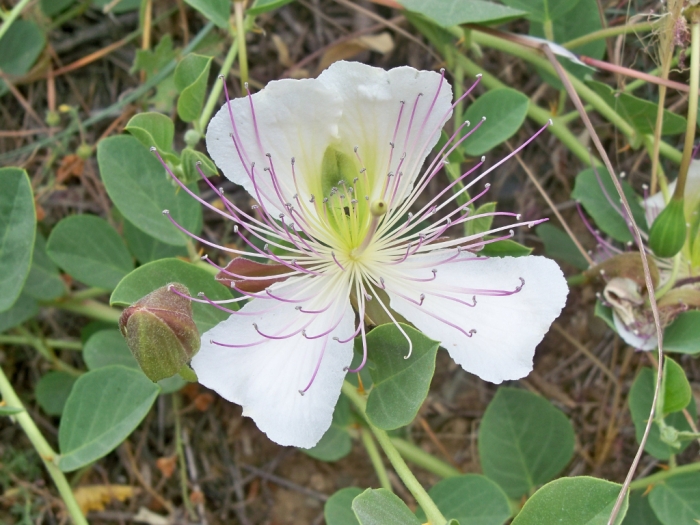Caper
(Capparis spinosa)
Caper (Capparis spinosa)
/
/

Daniel Capilla
CC BY-SA 4.0























































Estimated Native Range
Summary
Capers are valued for their edible flower buds and fruit, which are typically pickled or salted and used as a culinary garnish or seasoning. The plant is drought-tolerant and thrives in full sun, making it suitable for xeriscaping and rock gardens. It is also used in traditional medicine. In cultivation, Capparis spinosa requires well-drained soils and can tolerate a range of soil types, from slow to fast drainage. While it is generally low-maintenance, it can suffer from root rot in overly wet conditions and may attract pests such as caper whitefly. It is not typically invasive when grown outside its native range but should be monitored to prevent unwanted spread.CC BY-SA 4.0
Plant Description
- Plant Type: Shrub
- Height: 2-3 feet
- Width: 3-6 feet
- Growth Rate: Rapid
- Flower Color: White
- Flowering Season: Spring, Summer
- Leaf Retention: Evergreen
Growth Requirements
- Sun: Full Sun
- Water: Low
- Drainage: Fast, Medium, Slow
Common Uses
Deer Resistant, Drought Tolerant, Edible*Disclaimer: Easyscape's listed plant edibility is for informational use. Always verify the safety and proper identification of any plant before consumption., Fragrant, Rabbit Resistant, Showy Flowers
Natural Habitat
Native to Mediterranean maquis, coastal zones, and semi-arid regions of the Middle East and Central Asia
Other Names
Common Names: Caper Bush , Flinders Rose , Echter Kapernstrauch
Scientific Names: Capparis spinosa , Capparis spinosa var. inermis , Capparis spinosa var. aegyptiaca , Capparis nepaulensis , Capparis aculeata , Capparis aegyptiaca , Capparis microphylla , Capparis ovalis , Capparis peduncularis , Capparis sativa , Capparis spinosa subsp. aegyptiaca
GBIF Accepted Name: Capparis spinosa L.